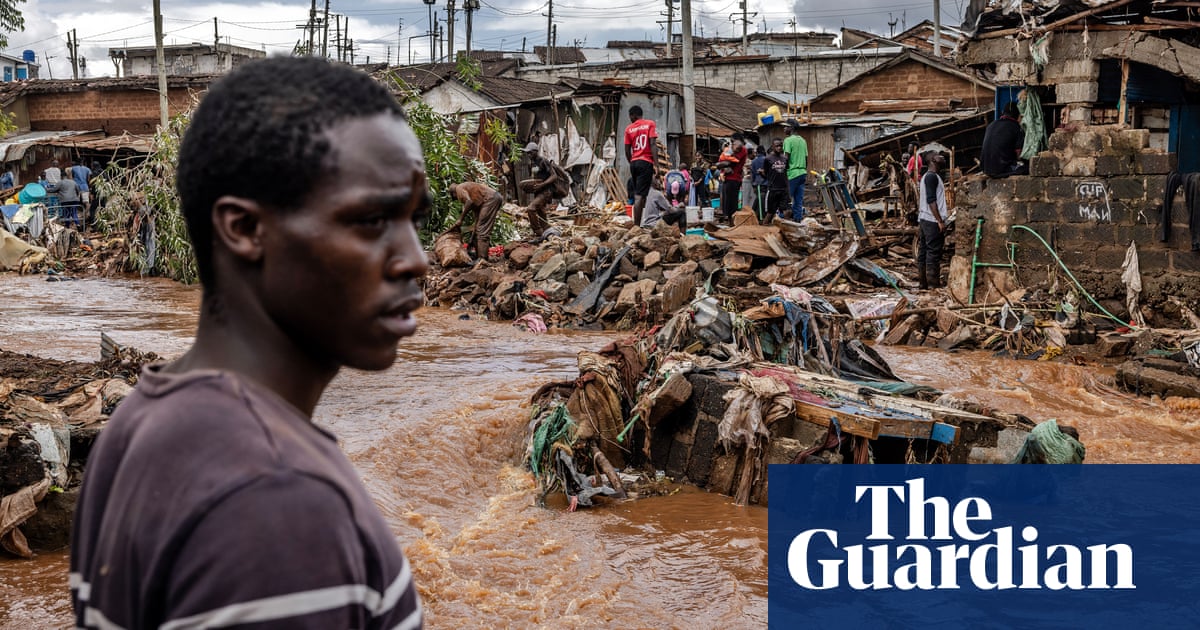What a waste: New York City budget cuts eviscerate community composting groups | New York


Steven Roig was excited to land a job trucking and processing compost in May of last year. After graduating from a jobs training program called Green City Force, he had spent much of his adult life making New York City greener through his work on green roofs, urban agriculture and landscaping. He especially loved working in compost, being part of the team at Big Reuse that processed 10,000lbs of food scraps and yard waste from Brooklyn and Queens every week, helping the organic waste on its journey back to becoming healthy soil.
“It’s a lot of hard work, but I enjoyed collecting the scraps, processing them and seeing them go through all the different cycles,” he said.
So it was a painful shock to find his job abruptly ending in December, leaving him to look for other ways to provide for himself and his two-year-old daughter.
Roig’s job was one of 115 New York community composting roles at grassroots organizations that relied partly on department of sanitation funding that were slated to be eliminated as a result of Mayor Eric Adams’ budget cuts. Though about 70 of those jobs were temporarily restored through private donations that will allow many of them to remain through June, their future is unclear once philanthropic funding runs out. The cuts have also entirely shut down some of the city’s composting organizations and left others with nothing but skeleton crews.
“These cuts represent a tiny fraction of the budget, but have outsized impacts on people’s lives,” said Anna Sacks, legislative chair of the Manhattan Solid Waste Advisory Board. “To dismantle overnight what has taken grassroots groups decades to build, in service of saving 0.006% of the New York City budget, is shameful.”
“These are the organizations that taught New York City about composting,” said Lily Pollans, an associate professor of urban policy and planning at Hunter College and author of Resisting Garbage: The Politics of Waste Management in American Cities. “These are the people that did the work to create the public story about why it matters. It wasn’t the city government. It wasn’t the sanitation department. It was community organizations.”
When the potential for the cuts was first announced, many within the composting community sprang into action. A coalition called Save Our Compost, which Sacks is a part of, organized three rallies, circulated a petition that garnered more than 50,000 signatures, and called and wrote the mayor’s office. But in the end, it wasn’t enough.
So what would be enough? What would it take to build out the kind of composting system in New York that could provide a reliable, lasting, climate-friendly solution for the organic waste produced by the city’s 8 million people?
The history of garbage politics
If you’ve only ever lived somewhere where you throw your trash in the bin and then never have to think about it again, it’s easy to take waste management infrastructure for granted. But how and for whom trash gets picked up is far more complicated – and political – than it might seem on the surface. From Manila to Detroit, marginalized communities have often been left to live surrounded by garbage until community members have organized and created, or demanded, a better system.
You don’t have to look far to find examples of this kind of organizing in New York’s own history. In the late 60s and early 70s, the Young Lords, a group of Puerto Rican activists inspired by the Black Panthers, sought to clean up East Harlem, which was infrequently serviced by garbage trucks and street sweepers. The Young Lords initially went to the local sanitation office to ask for better service, and even tried bagging up the trash themselves to make collection easier. But their requests were essentially ignored, Hiram Maristany, the Lords’ official photographer, recalled later.
That’s when the group decided to change their strategy: they began dragging the uncollected trash into the streets, making the roads impassable for car traffic. Repeated actions of this kind, dubbed “the Garbage Offensive”, eventually forced the city to respond and start cleaning up the long-neglected neighborhood.
Composting in New York has likewise been shaped by tenacious grassroots groups. In the 70s and 80s, activists began to reclaim and green their neighborhoods through community-led gardening, composting and recycling. Some of those same people went on to become leaders in the composting movement by founding grassroots composting organizations that continue to this day, like the Lower East Side Ecology Center and Earth Matter.
But the city government’s involvement has long been marked by stops and starts. A timeline of composting programs in New York referenced at a January compost “teach-in” at the Brooklyn public library painted a stark picture of the problem: the city has invested and disinvested in composting so many times that the current budget cuts are less the exception than the rule.
That’s problematic, explained Pollans, because programs need to be consistent for citizens to get accustomed enough to them to actually use them. “When you stop and start so much, people lose faith,” she said. “You’re basically guaranteeing that the programs are going to fail when they do start again, because nobody knows what’s going on and no one trusts the system anyway.”
Building a better future
If the city is ever going to create the kind of lasting program that bolsters public confidence enough to inspire mass participation, some things will need to change.
The city is currently rolling out its own curbside organics program that does send some waste to be processed at a department of sanitation-operated composting program on Staten Island, but most of the waste collected via New York’s residential brown bins or street-side orange bins is sent to an anaerobic digestion facility. Though anaerobic digestion at its best can convert food waste into fuel and the leftover solids can be composted, the facility in New York currently flares the excess methane it produces and landfills the solids.
For Pollans, one of the first things to address is the mission of the sanitation department itself. Right now, she argued, its goal is basically to “make the trash go away”. If that doesn’t also include social and environmental responsibility, then strategies like recycling or composting will always be the first to get cut when money is scarce, because they’re not seen as core to the organization’s mission.
Pollans also said that cities with successful composting programs “have a lot more public buy-in”, transparency and incentives for citizens to participate in, like charging residents higher rates for sending more waste to a landfill, and lower rates if they divert more into composting or recycling streams.
New York City council member Sandy Nurse, herself a former community composting organization founder and up until January the sanitation committee chair, says that New York could actually save money if it could get enough residents to participate in composting programs, due to economies of scale (sending trash to a landfill currently costs the city about $495m a year, she said). She’s also looking at passing bills that could help make community composting organizations more financially resilient in the future.
One would make public land available to composting organizations for free or for a very low cost, which could make a real dent in operating costs. Another would allow grassroots groups to sell their own compost, which they have historically been prohibited from doing if they’re operating on public land. (They typically give it away for free to community gardens, parks and other groups.) Neither of these initiatives would save community composting outright, she said, but they could help grassroots groups become more financially stable even when budgets fluctuate.
In the end, it’ll likely take some combination of tactics to achieve a lasting, scaled-up composting program in New York that residents trust enough to participate in. Sacks and Nurse encourage citizens who care to get involved however they can, by following the Save Our Compost coalition and writing to the mayor, the sanitation commissioner and the new city council sanitation committee chair to let them know that composting should be a priority.
There’s no guarantee, even then, that the composting advocates will achieve their goals. But as history shows, sometimes it takes communities banding together and fighting hard – and when they do, they just might win.
“This is an essential public service that needs to be valued and prioritized, because the future of our city depends on us very quickly making climate action a part of the public common good,” said Nurse. “We need options for every New Yorker to participate in composting in the way that makes the most sense for them.”




